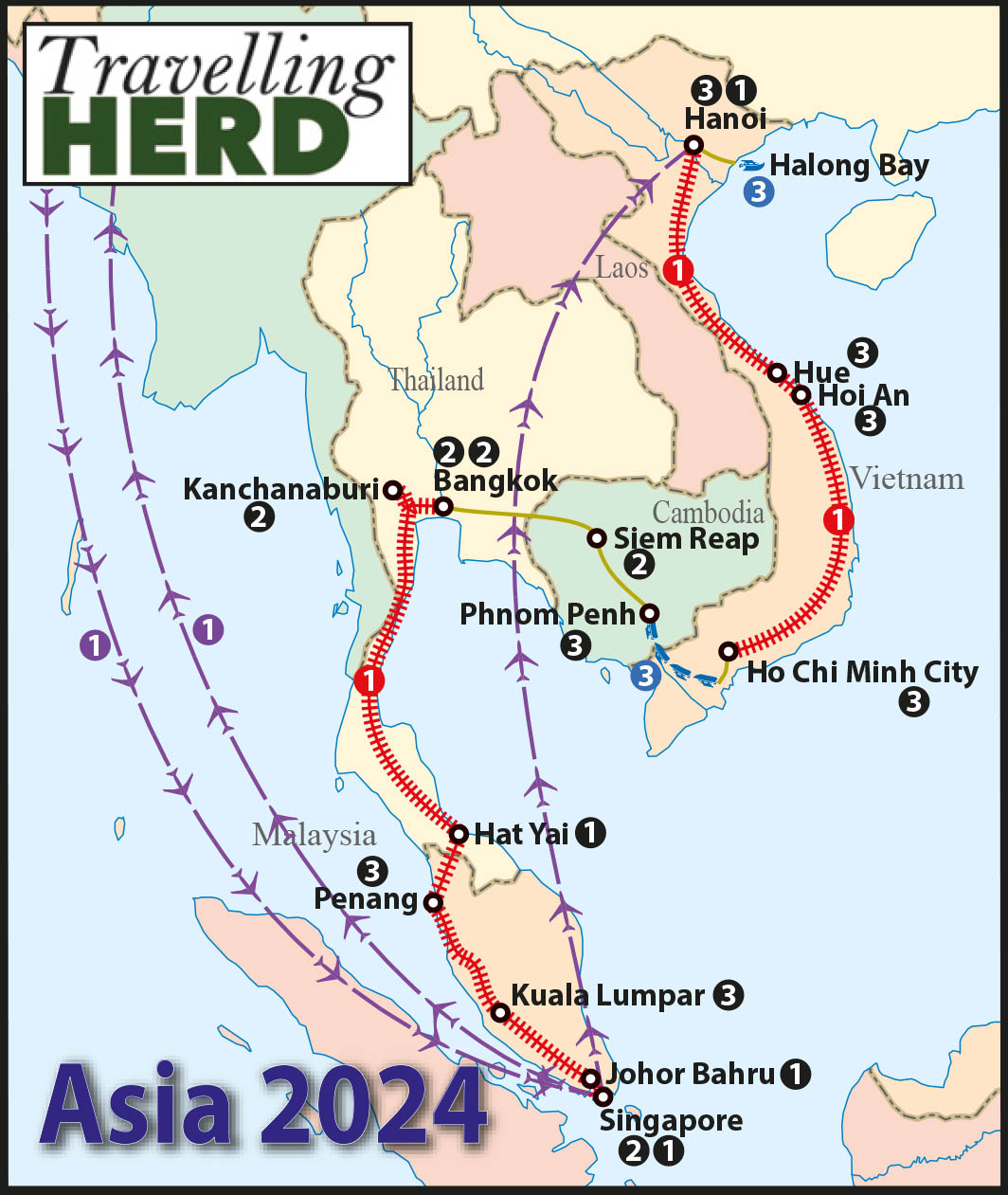Read this blog: The one where Matilda looks older and loses her sense of humour
Wednesday 27th March 2024
At the start of the cruise along the Mekong we had to surrender our passports [which made us both a bit anxious] to allow the cruise company to undertake the paperwork for our entry visas into Cambodia. On the morning we docked in Phnom Penh, all passengers had to present themselves on the Sun Deck at 07:00. Here our passports were returned to us complete with a tourist entry visa and an exit visa form. We then had to walk several paces across the Sun Deck to present them to the border guards for approval. The immigration official that Robert saw compared him to his passport photo and pronounced him, or perhaps Robert’s photo, to be “handsome”. By contrast, when Matilda presented her passport to the second border guard, he spent some time looking from the photo to Matilda and back again. He then consulted a colleague who looked at both Matilda and the photo and nodded but commented, “You were much younger then.”
Sadly it’s true, the current photo has little or no grey hair and she will need to renew her passport next year but she nevertheless felt his comment was a little blunt.
As we disembarked onto Cambodian soil, we noticed that only the local Cambodian speaking crew members were sent to help to deal with luggage and any language difficulties. We booked a Grab taxi to our hotel but there was some delay as we did not know that taxi cabs have to pay to enter the port area. Fortunately, as we got into the car, one of the Cambodian crew members explained that we would need to pay to get out of the port otherwise we might have felt we were being taken for a ride.
We arrived at our hotel too early to check in so left our luggage and started to walk around some of the sights. Our hotel was very close to the beautiful and iconic Royal Palace.

We had been given lots of conflicting information about opening times for Cambodian sites and we had been warned that people in the street would come up to us saying that places were closed and wanting to take us somewhere else which was not necessarily part of our plans. We therefore went to the entrance to the Royal Palace to confirm the opening times for ourselves.
The Palace does in fact close between 12:00 and 14:00 and we decided to wait until the afternoon session when we would not be rushed as the site covers 174,870 m², although not all of that is open to the public.
Leading away from the Royal Palace is Wat Botum Park, named after Wat Botum, one of the oldest temples in the city. It is home to this beautiful gilded bird statue and extends up to Preah Suramarit Boulevard.

A large park area bordered by Preah Suramarit Boulevard and Preah Sihanouk Boulevard is home to the Norodom Sihanouk Memorial, also sometimes called the Statue of King Father Norodom Sihanouk. This 4.5m tall bronze statue stands under a 27m high canopy and celebrates Sihanouk’s efforts to achieve the liberation of the country from French colonialism in 1953.
However, as we were later to discover, he had a rather complicated and confusing royal history.
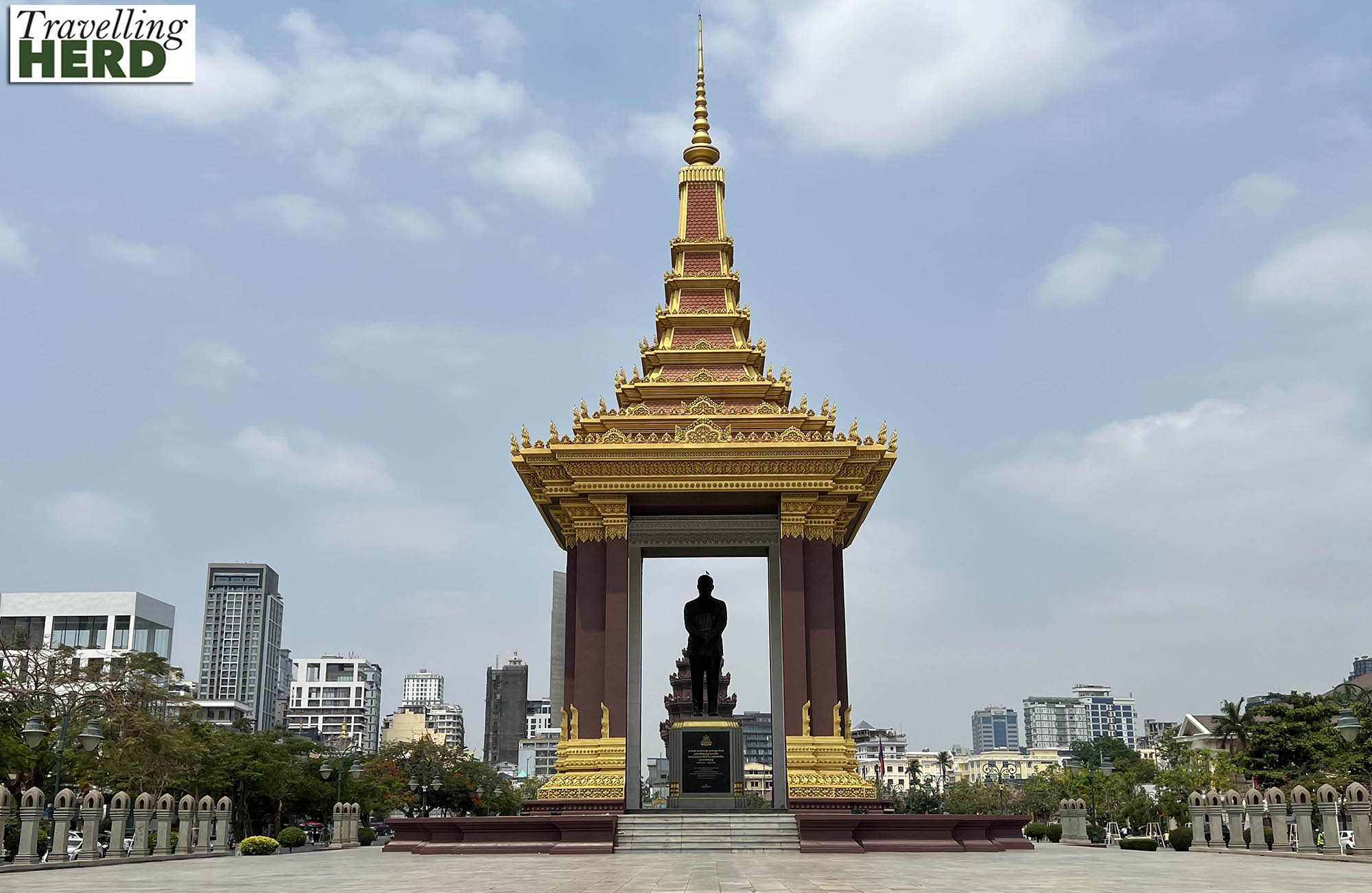
Close to the King’s statue stands the imposing 37m tall Independence Monument [or Vimean Ekareach] which also celebrates Cambodia’s independence from the French in 1953. The monument was started in 1958 and opened in 1962 and now also serves as a cenotaph and memorial for Cambodia’s war dead. It was designed in the form of a lotus reminiscent of the Khmer architecture seen at ancient sites such as Angkor Wat.
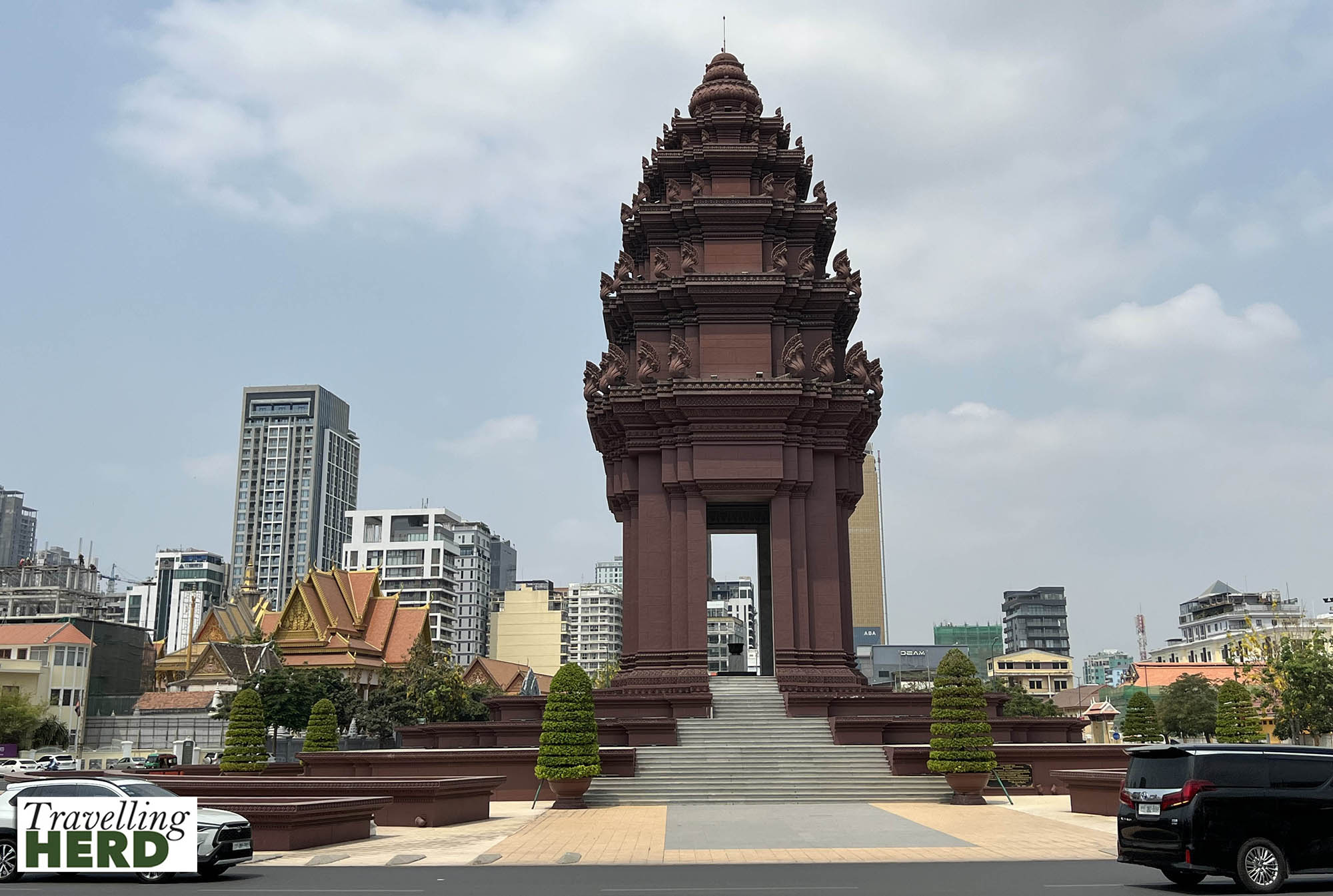
It was at this point that Robert felt in his pocket and produced, as if by magic, the key to our cabin on the RV Indochina Pandaw which he had failed to return as we disembarked. It was also at this point that Matilda started to lose her grip on her sense of humour.
We agreed that it would be best to see if we could return the key to the boat before it left the port and so we undertook a long, hot detour from our sight-seeing route back to the disembarkation point. Robert did suggest Matilda could wait in the shade by the gate a kind man offered her a seat while she waited. His thoughtfulness was much appreciated.
From here we retraced our steps and walked back to Wat Phnom Daun Penh where two nagas stood guard on either side of the steps up to the temple. The naga is a mythical Cambodian creature in the form of a seven-headed snake which represents power, water and fertility. It is frequently seen decorating balustrades leading to temples or palace buildings.
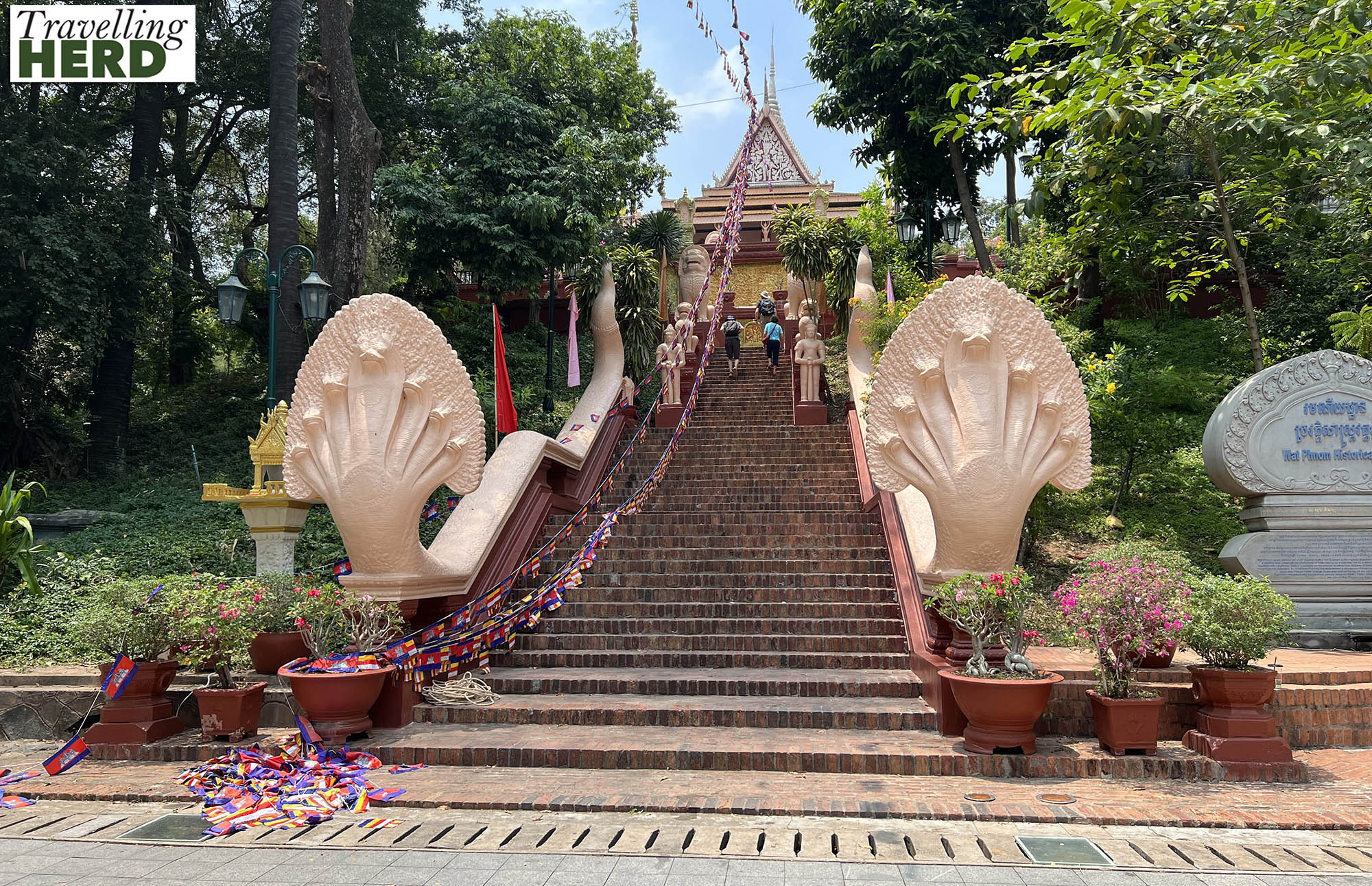
The original temple was built in 1373 to house four statues of the Buddha said to have been left by the waters of the Mekong. It is situated on top of the city’s only hill which is in fact man-made. Robert began to feel uncharacteristically faint which Matilda felt may have been a manifestation of guilt. So while he rested at the bottom, Matilda climbed up to see the ornate temple at the top and pray for the return of her sense of humour.
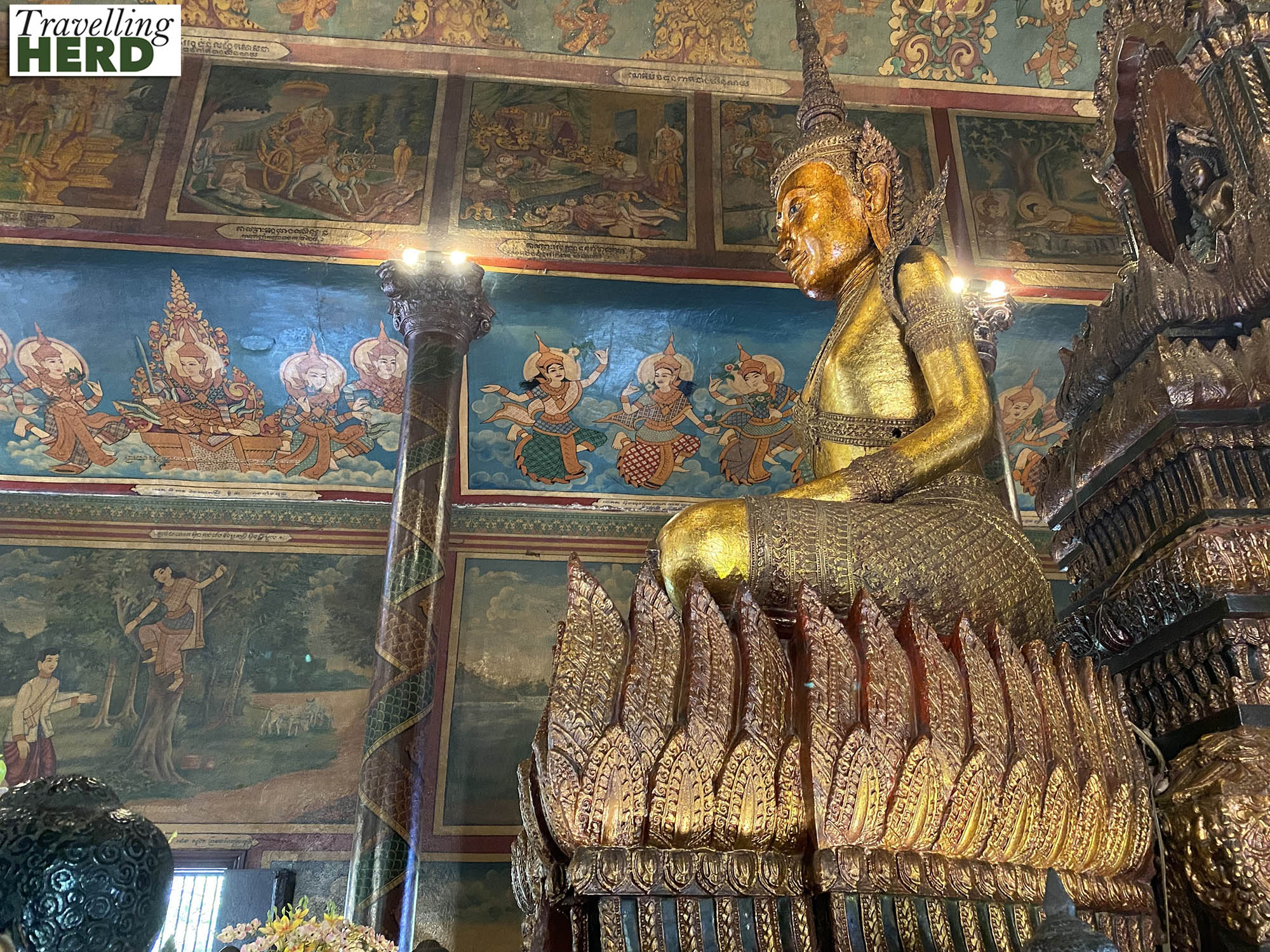
Regular readers will not be surprised to learn that Robert felt a beer would help him to recover so we caught a tuk tuk [see also Video of the day] back to the Hard Rock Café [see Selfie of the day]. Meanwhile, Matilda, still in search of her sense of humour, wondered why we hadn’t used this form of transport to return to the ship.
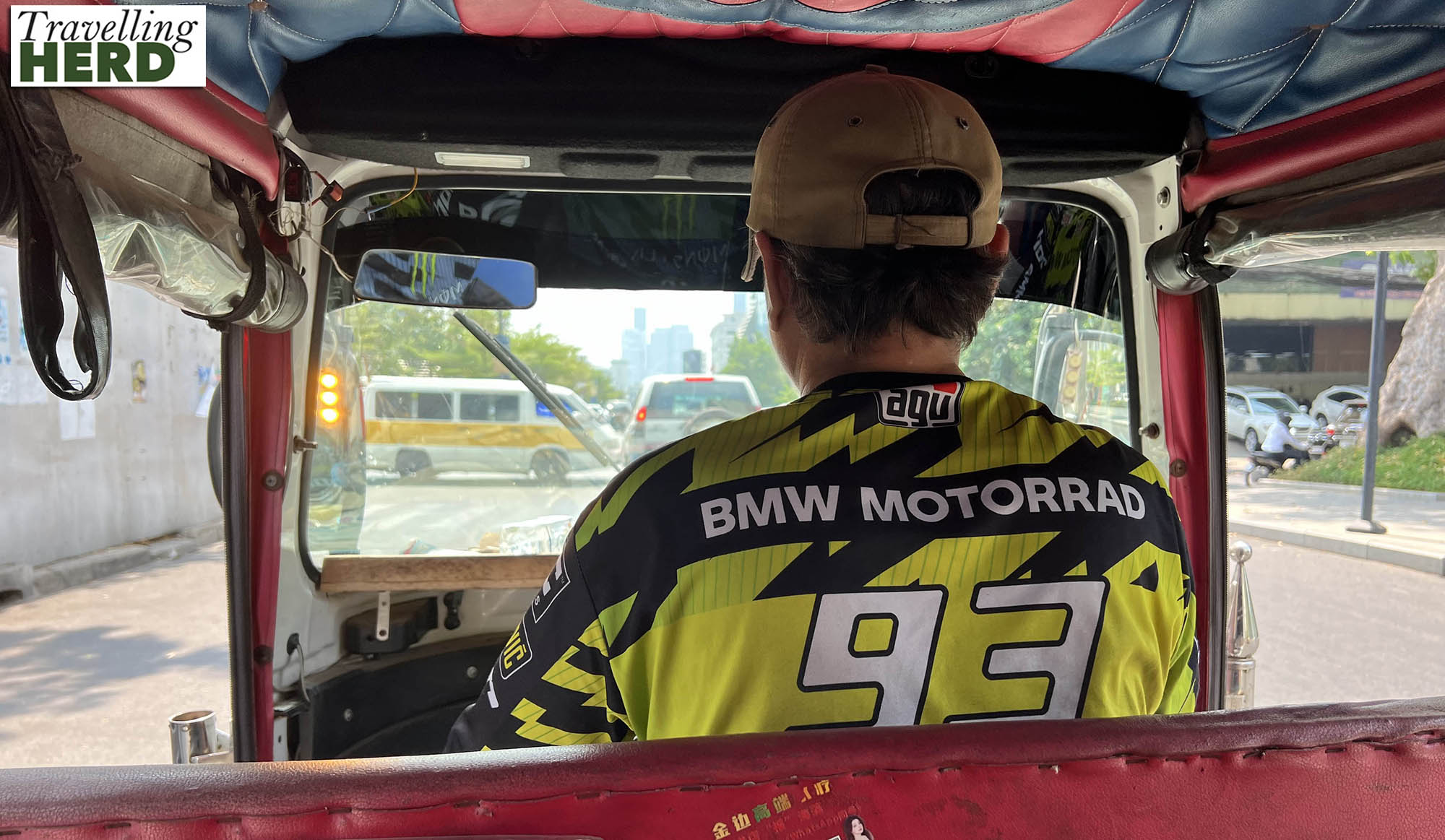
Robert felt much revived by his chilled beer and the air conditioning. As it was past check in time we returned to the hotel and found that we had a room with a balcony overlooking the grounds of the Royal Palace.
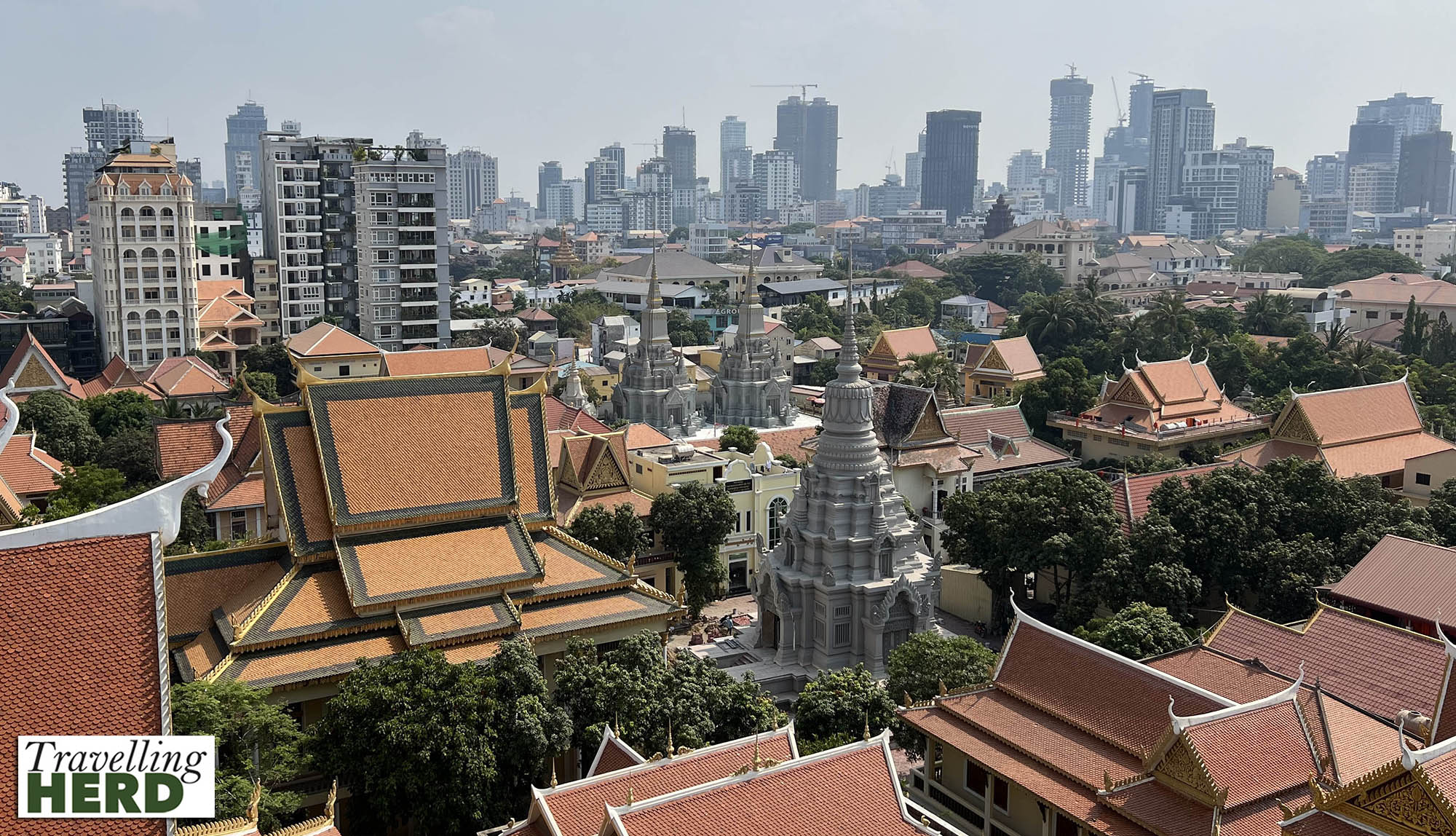
We could not conceive of hotel rooms having such a clear view into any of the royal residences still in use in the UK.
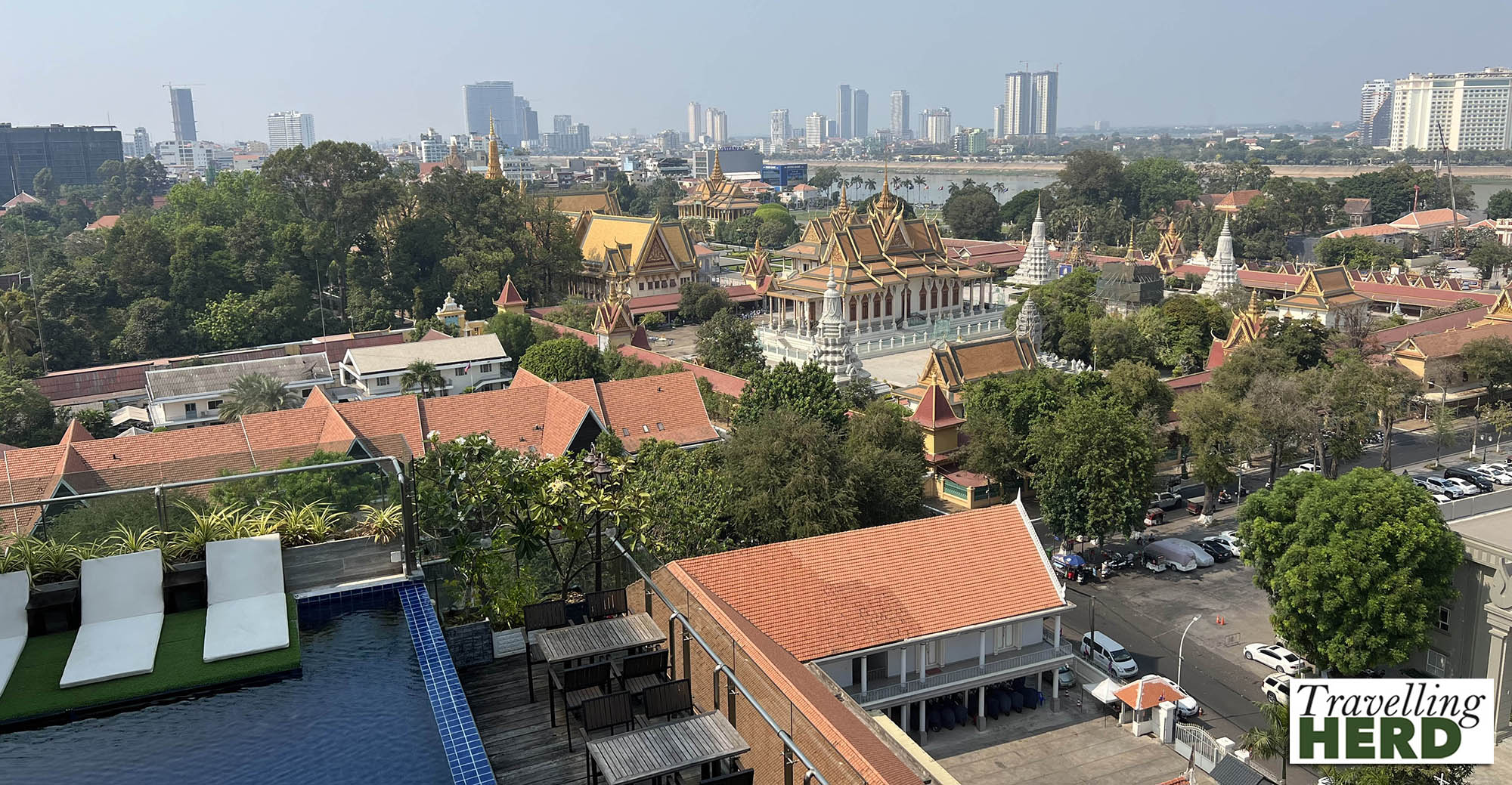
Having settled in to our room it was after 14:00 and we returned to the Royal Palace. There are official guides at the entrance who offer their services as people arrive. There is a flat fee of $10 which you pay at the same time as buying your entrance ticket and we decided we would like to have some of the buildings and sights explained to us.
No photographs are allowed inside the buildings in the Palace complex but the exteriors are gorgeous. The elegant layered roofs have delicately curved finials which reach skywards.
One of the main attractions is the Silver Pagoda [below] or Wat Preah Keo. Originally built in 1892, the Silver Pagoda is also known as the Temple of the Emerald-Crystal Buddha because it is home to a relatively small green statue. There is some ambiguity about what the Buddha is actually made from but it is displayed at such a height that no-one will be able to scrutinise it closely.
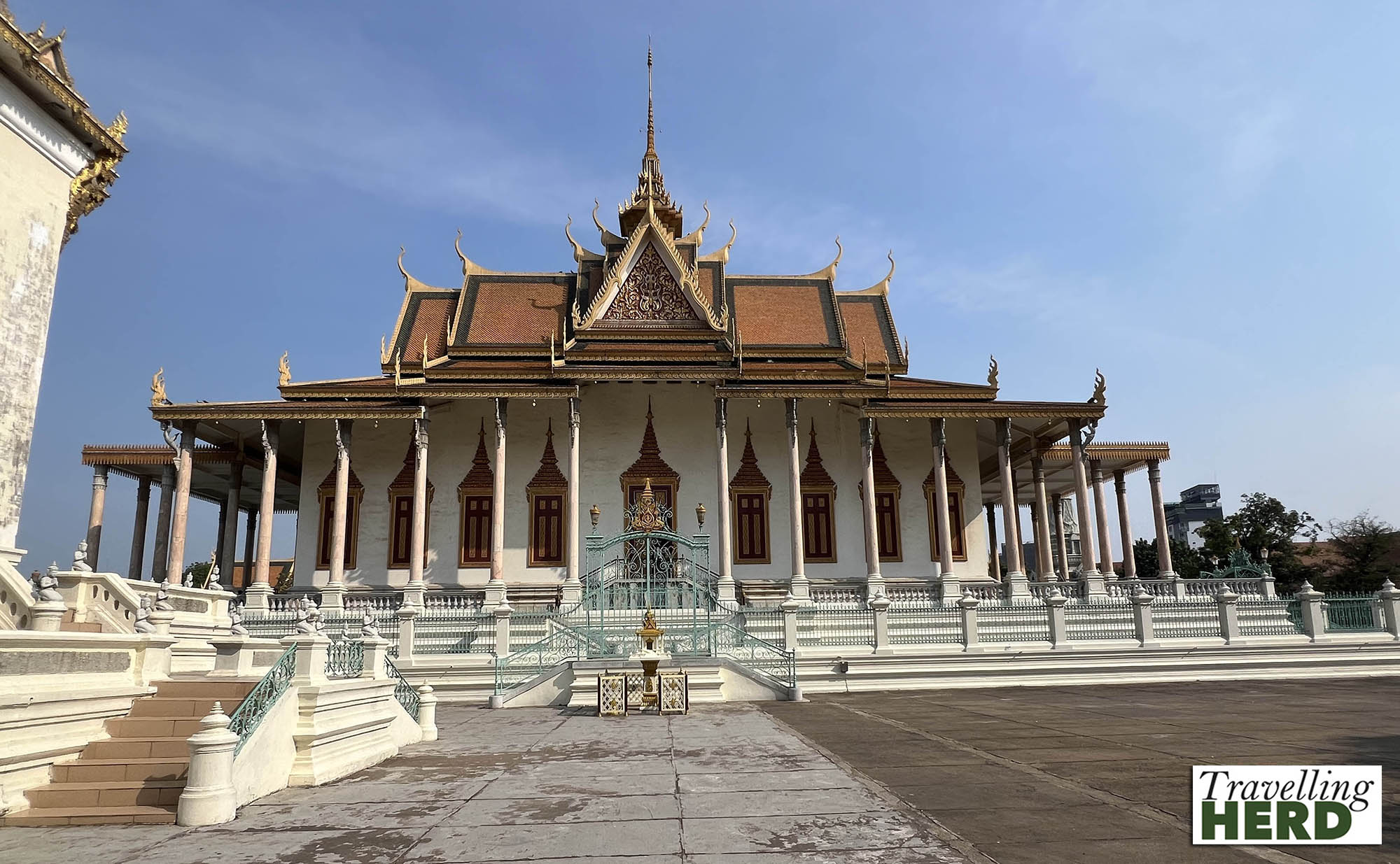
Its other name derives from the fact that King Norodom Sihanouk had the floor inlaid with 5,329 thick silver tiles. The floor is protected by carpet but a small area has been left uncovered near the entrance so that visitors can admire the tiles. In the 1960s the old wooden structure was rebuilt using concrete as, perhaps due to the weight of the silver, it was becoming unstable.
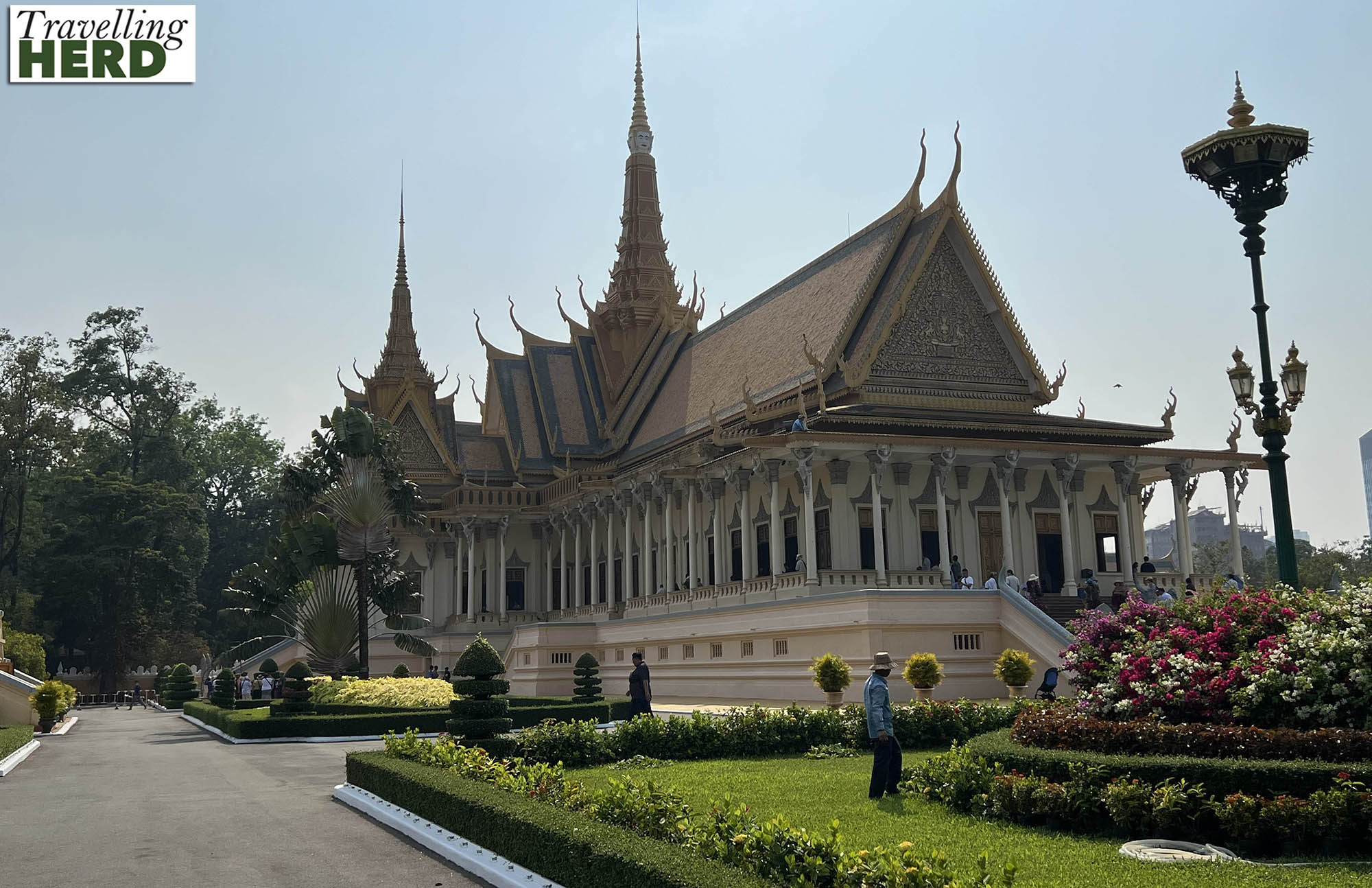
Similar to our parliamentary monarchy in the UK, the royal family in Cambodia is a symbolic figurehead with little real power. The Cambodian monarchy dates back to at least 68 AD apart from the period between 1970 to 1993 when it was abolished. Unusually, however, the King of Cambodia is not an hereditary position: he is now elected by the nine members of the Royal Council of the Throne. Although the country has been ruled by queens in the past, currently only male descendants of King Ang Duong [who ruled from 1848 to his death in 1860] qualify for election and only once they reach the age of 30. Cambodia consequently has two royal houses: the house of Norodom and the house of Sisowath which both give their names to streets and places in the city.
The Royal Palace of Cambodia was built between 1866 and 1870, with some subsequent changes. It has been the official royal residence of the King of Cambodia since it was completed, with a period of absence during and after the rule of the Khmer Rouge. Our guide told us that the King was currently on a state visit but would be returning the following day and so from that time on additional areas of the palace would be closed to visitors. A royal flag flies over the palace when the monarch is in residence, but it was not flying on the day of our visit.
The area where the King lives is closed to the public and covers half of the total area of the Palace grounds. It includes the Khemarin Palace [below], the royal gardens, as well as other buildings and pavilions.
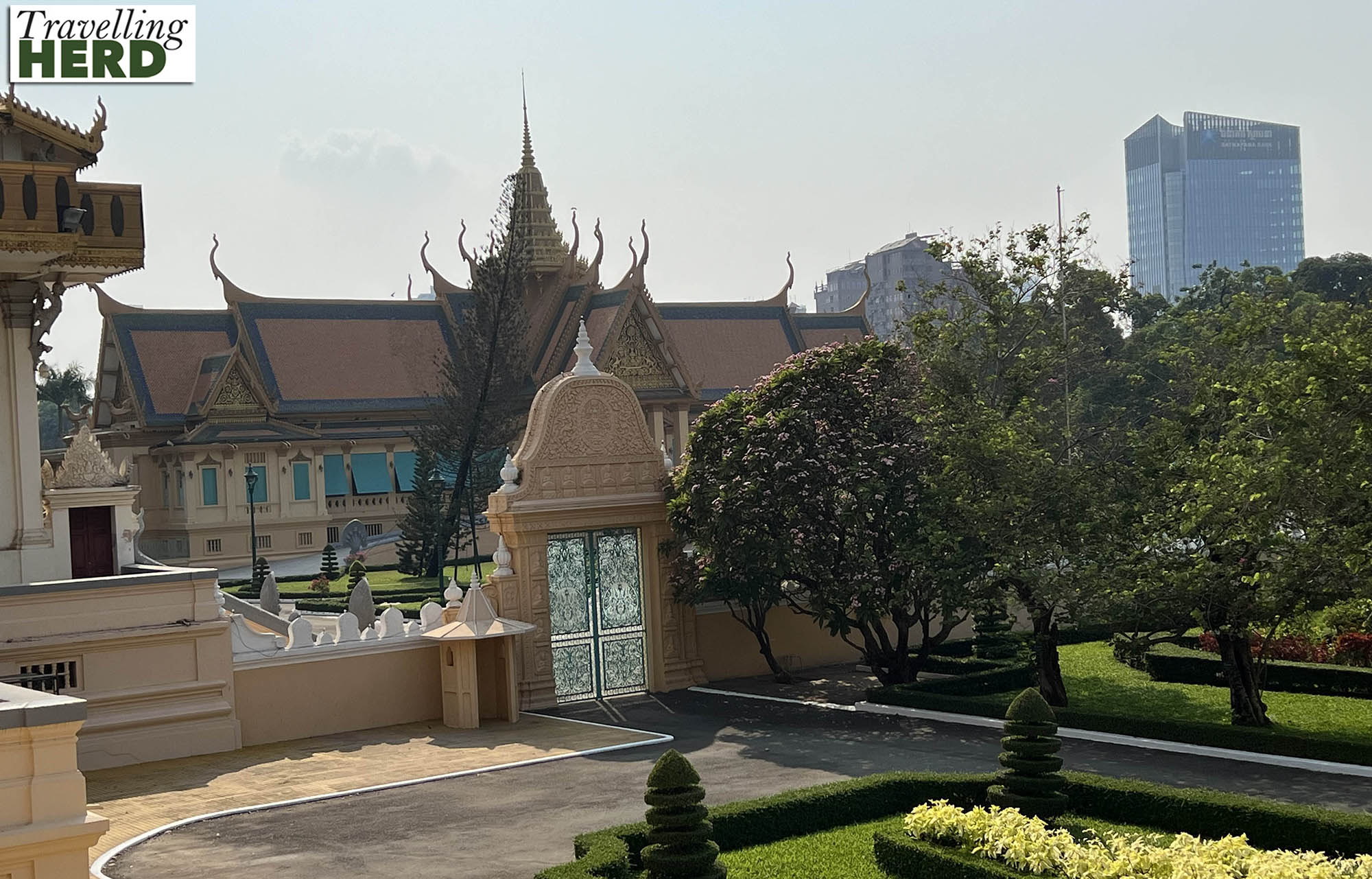
There is a scale model of the historic site of Angkor Wat which we admired as we plan to visit later on this trip.

Amongst all this splendour stands a grand but tragic memorial to King Sihanouk’s daughter, Kantha Botha who died at the age of four from leukaemia.
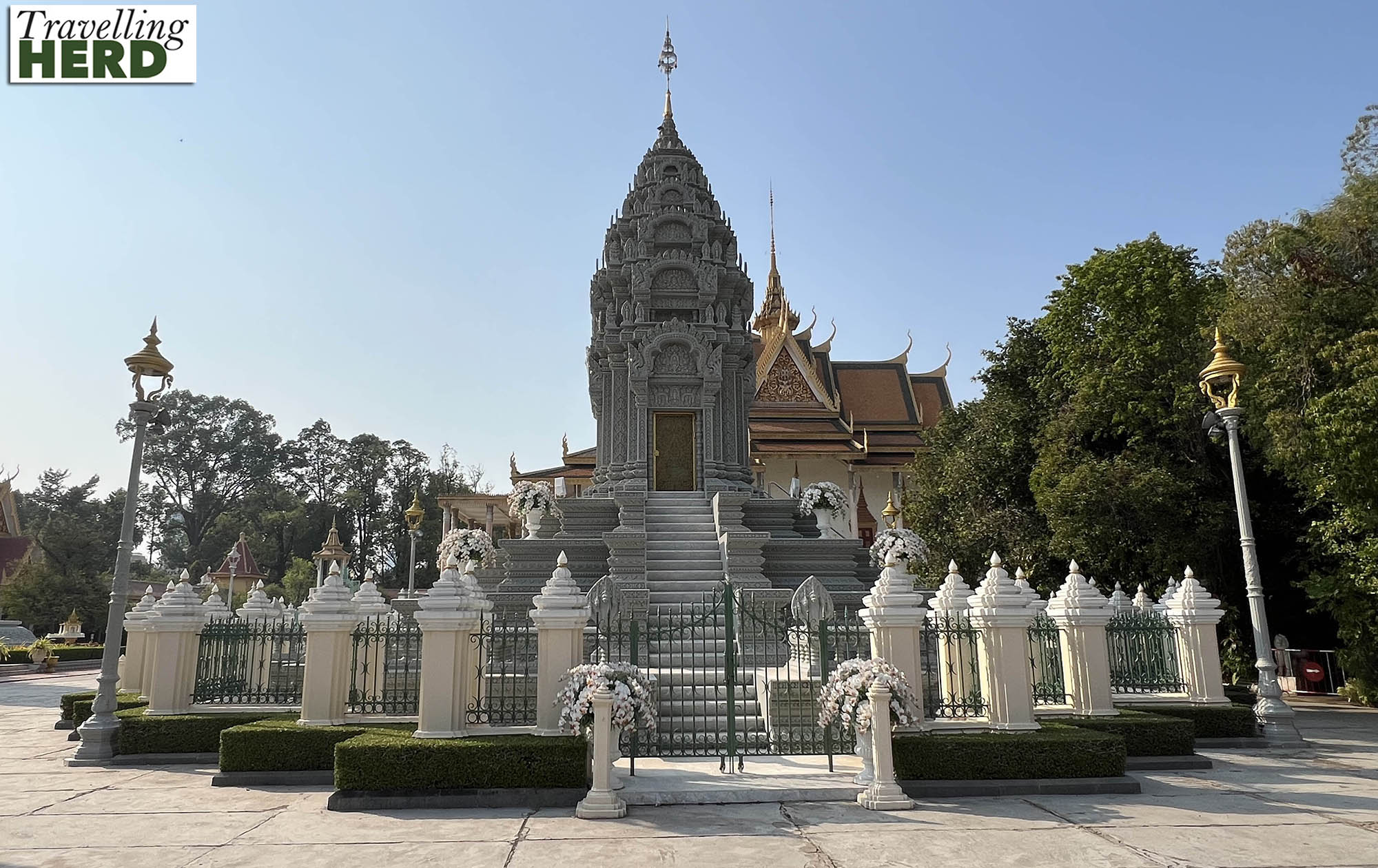
The succession of the Kings of Cambodia during the twentieth century is far from straightforward. Our guide told us that the Stupa of King Norodam Suramarit [below] was often identified incorrectly as being the Silver Pagoda, because of its colour.
As far as we can ascertain, King Norodom Suramarit ruled from 3 March 1955 until his death in 1960 and was both preceded and succeeded by his son, King Norodom Sihanouk.
His grandfather King Monivong skipped a generation and named Sihanouk as his successor and he first became King of Cambodia at the age of 18 in 1941. He abdicated in favour of his father in 1955, having succeeded in liberating the country from the French, to enter politics. He was elected Prime Minister but became Chief of State again on his father’s death. He lived through many regime changes and seems to have maintained relations of some sort with them all: French Colonial Rule; Japanese puppet state; the Khmer Rouge; Vietnamese backed communism and a transitional communist regime into another monarchy when he became King again in 1993. He led a complicated life.
Established in 1993, the Royal Council of the Throne has only met twice to date. Once when it was first established to reinstate Norodom Sihanouk as King and again in 2004 when it elected his son Norodom Sihamoni as his successor.
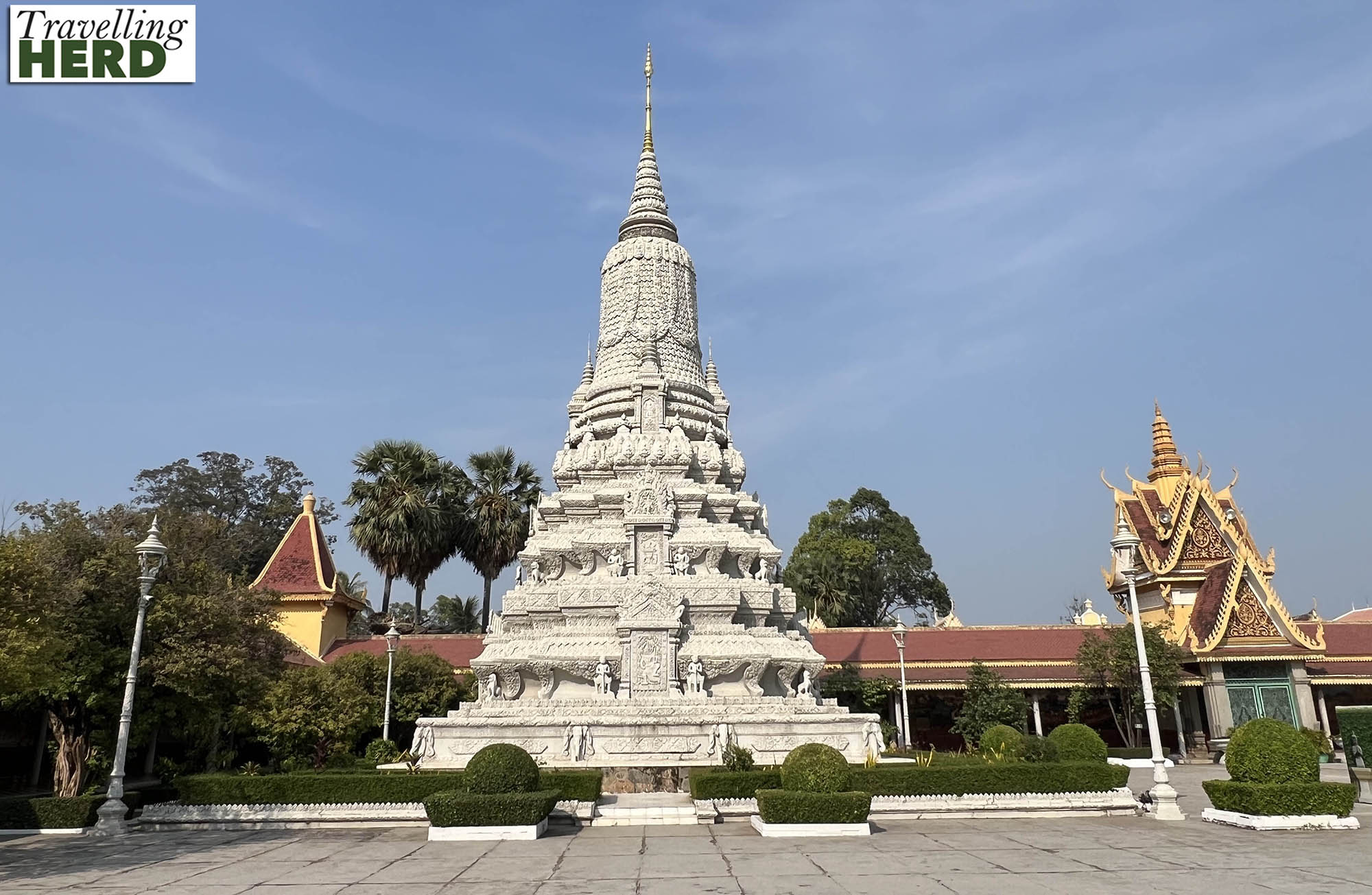
On our way out of the Palace we passed the Preah Tineang Phhochani or the Banqueting Hall. It was built in 1912 as a replacement for an older banquet and dance complex located slightly to the north. Reinforced concrete was used to create a traditional Khmer style building in keeping with the rest of the Palace.
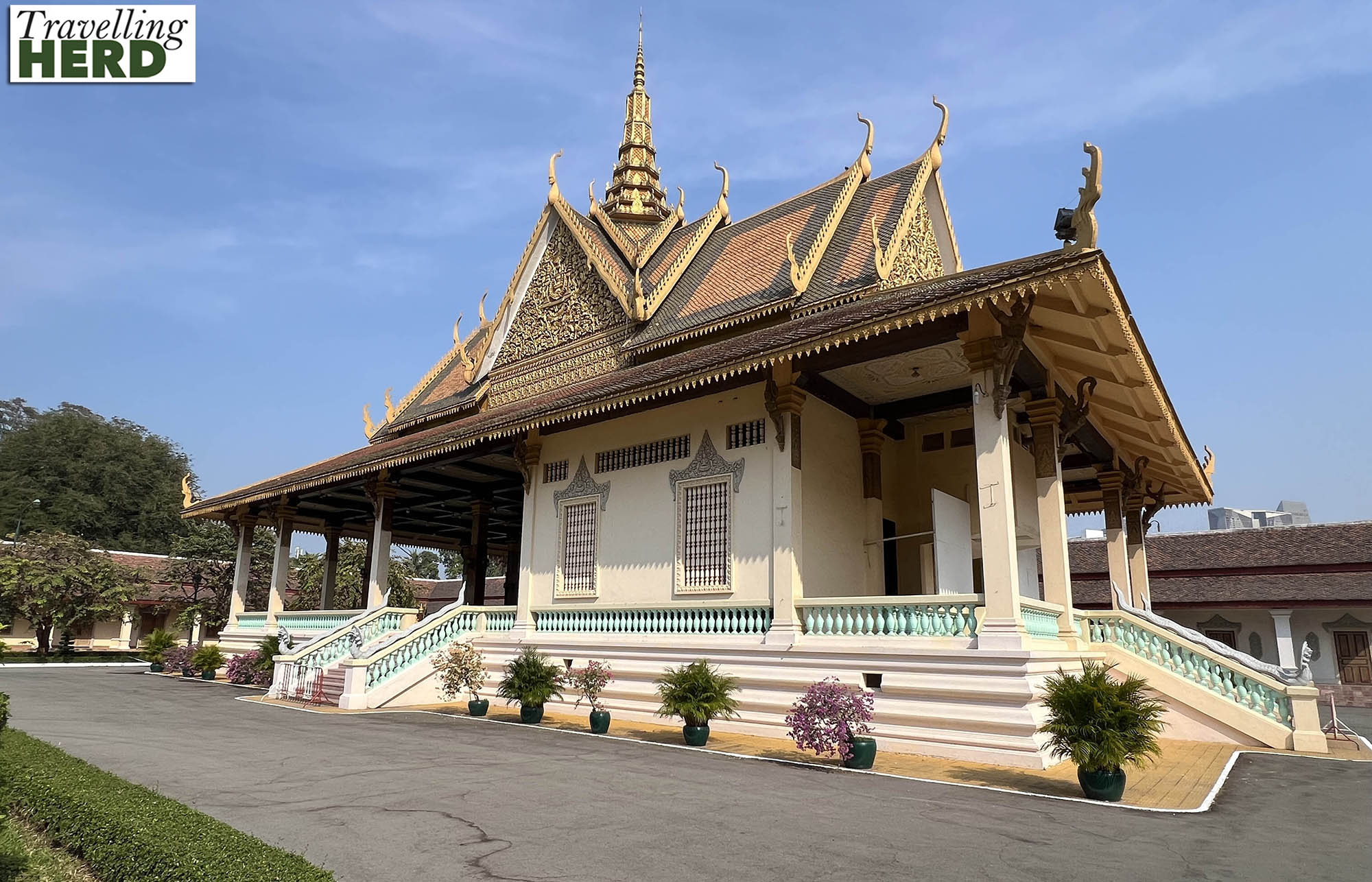
After walking around the site of the Royal Palace where there is comparatively little shade, the rooftop pool at Le Botum Hotel provided a welcome opportunity to cool down, although with the sun shining on the water all day, it was more like a tepid bath than a bracing dip.
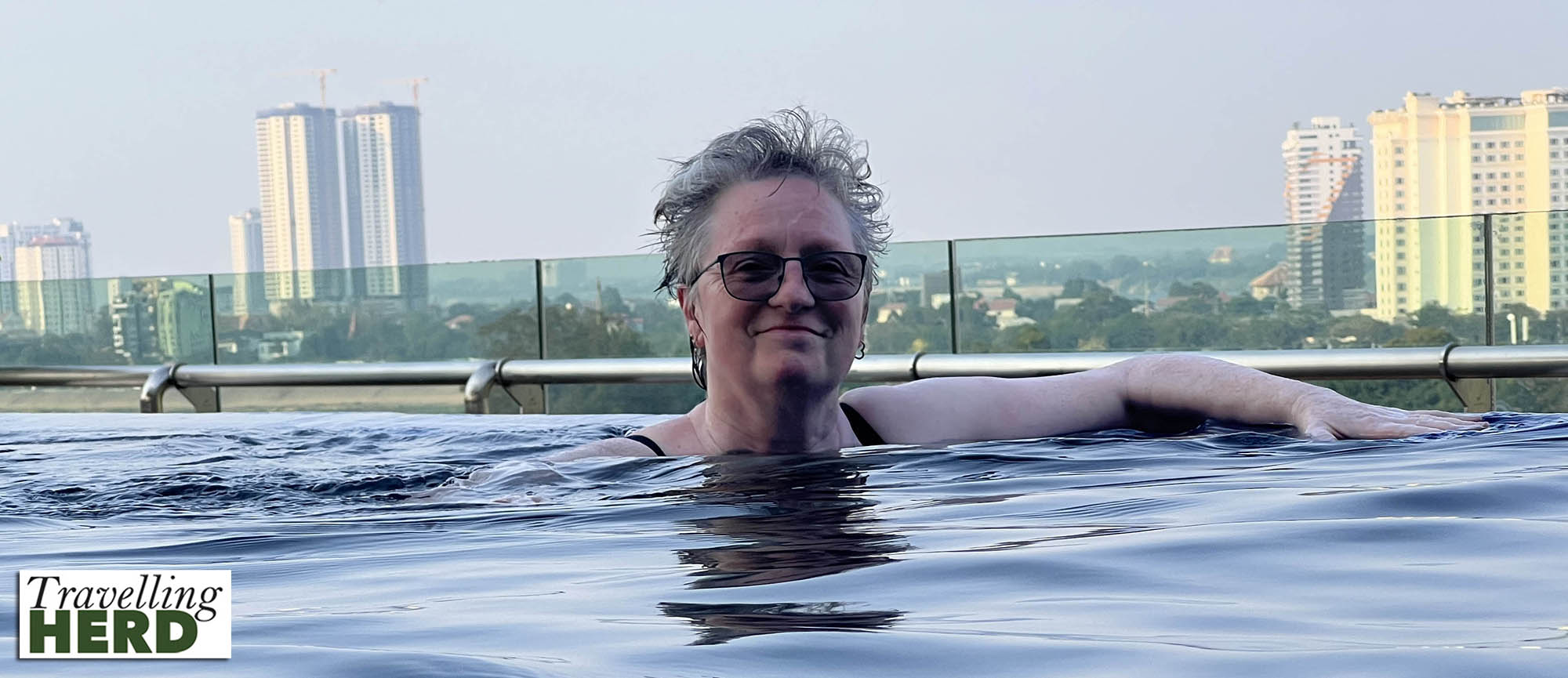
We watched the sun go down before thinking about finding somewhere to eat.
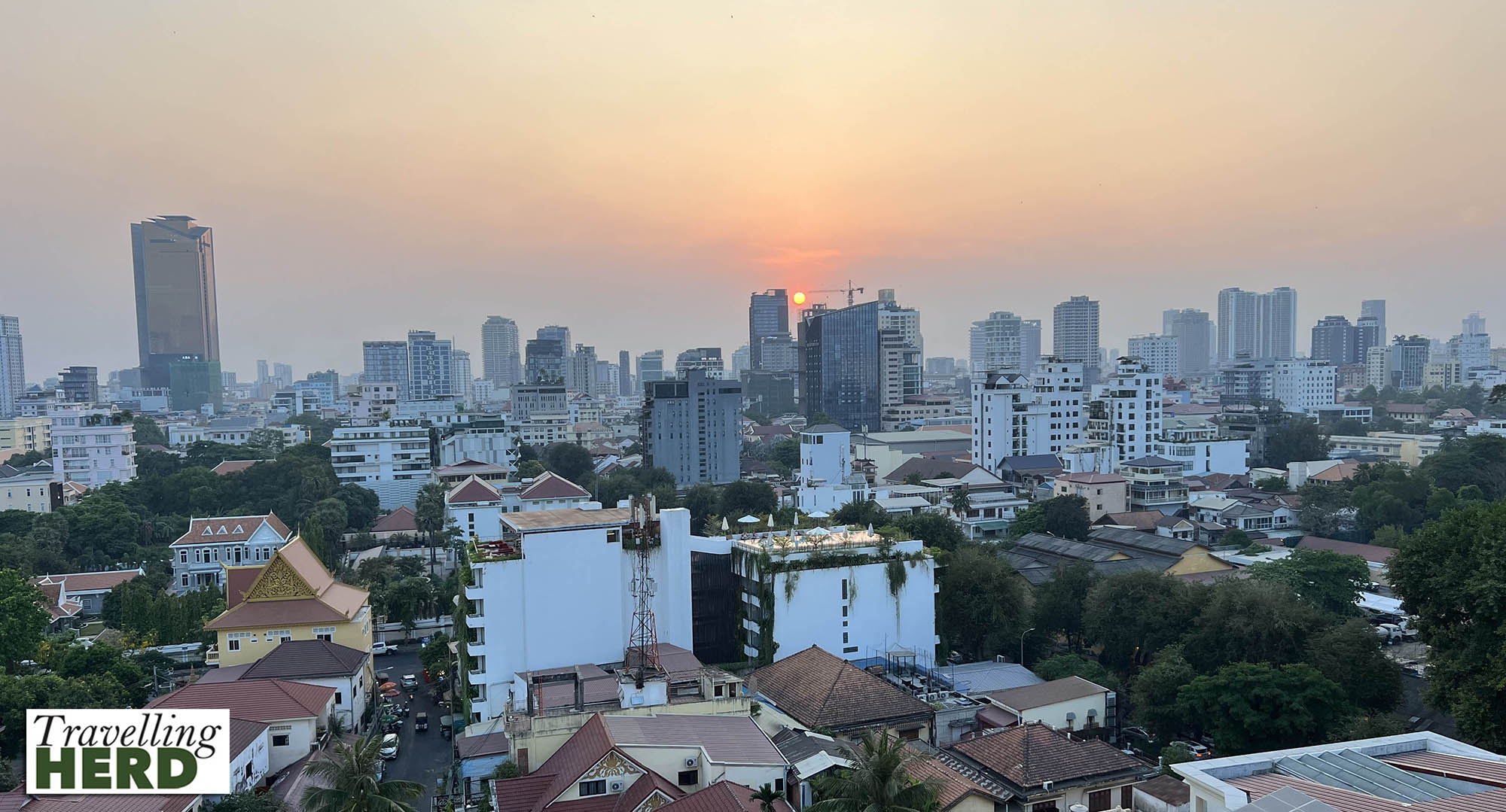
A short walk away was the Prince Brewing Brewery Tap, which Robert felt he had to experience and fortunately they also provided us with sustenance.
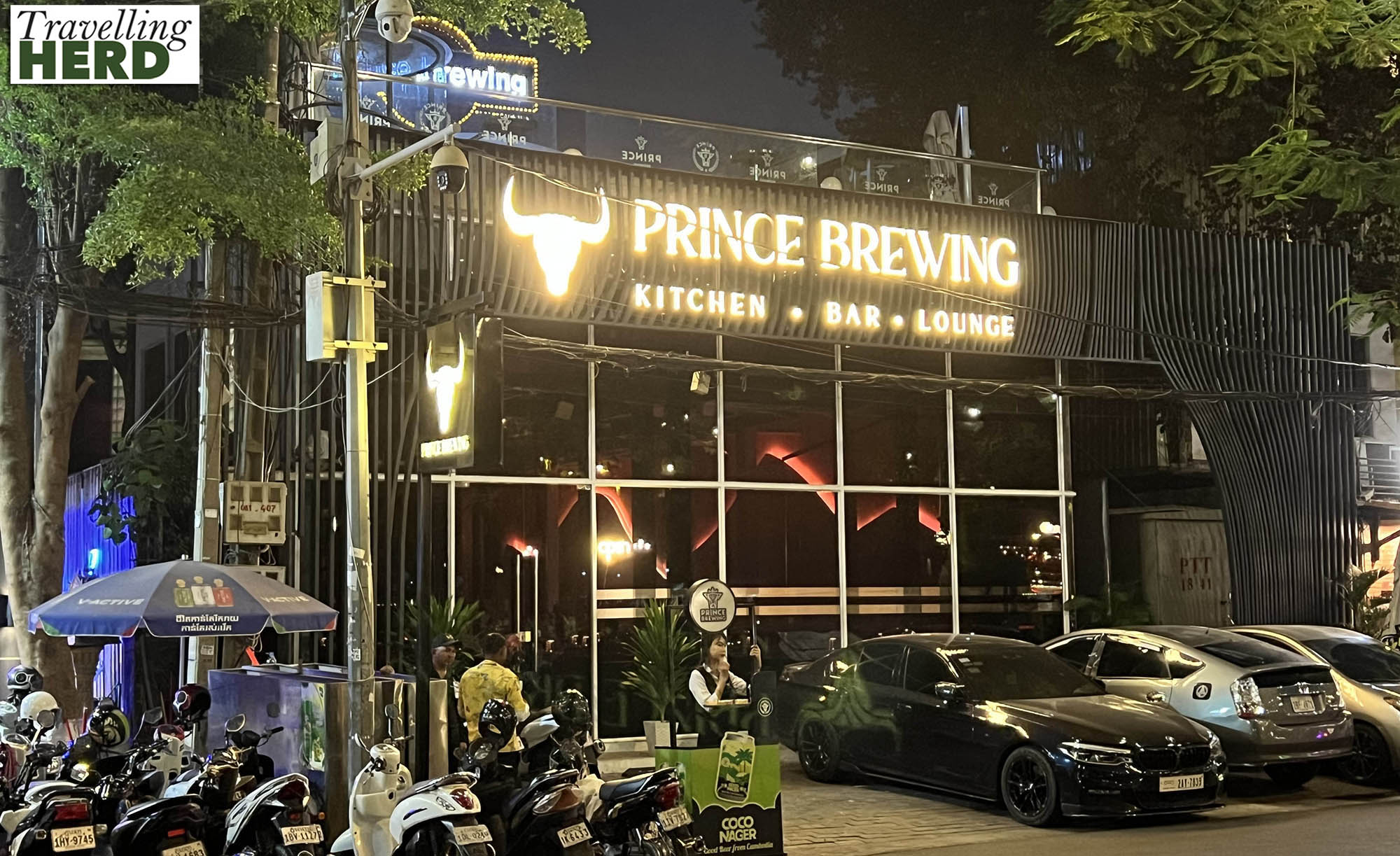
Once back at the hotel we could not resist admiring the view again.

Video of the day:
Selfie of the day:
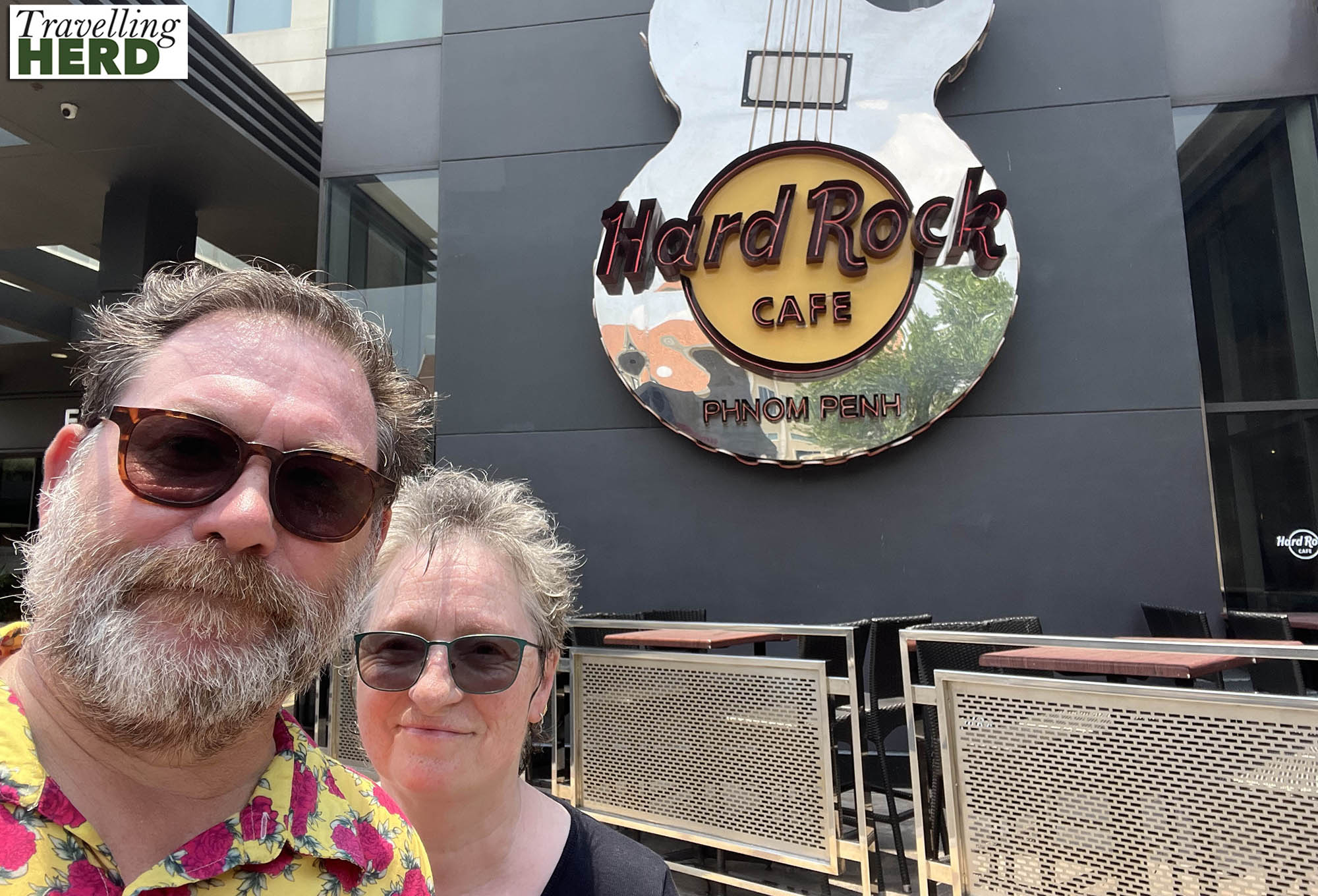
Route Map:
